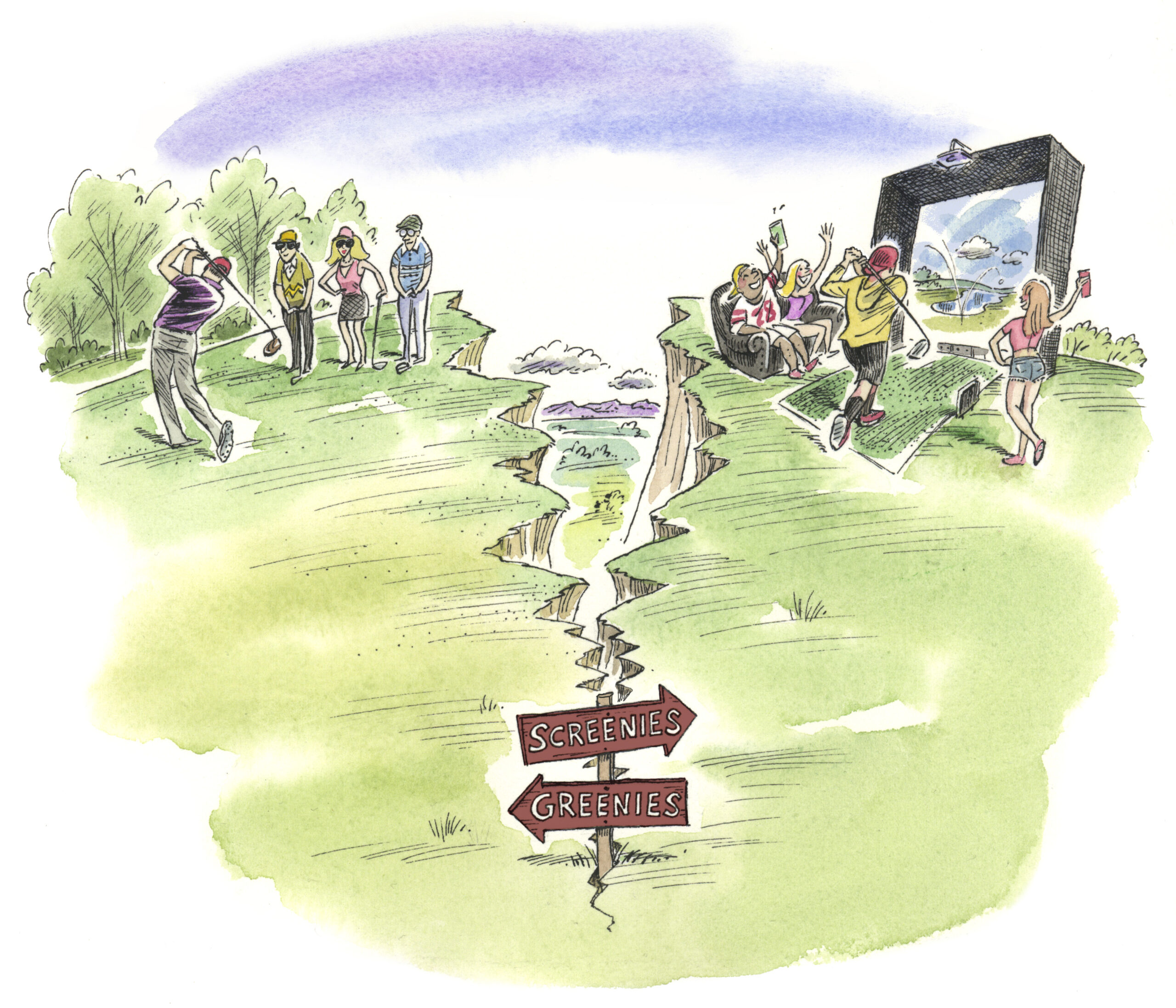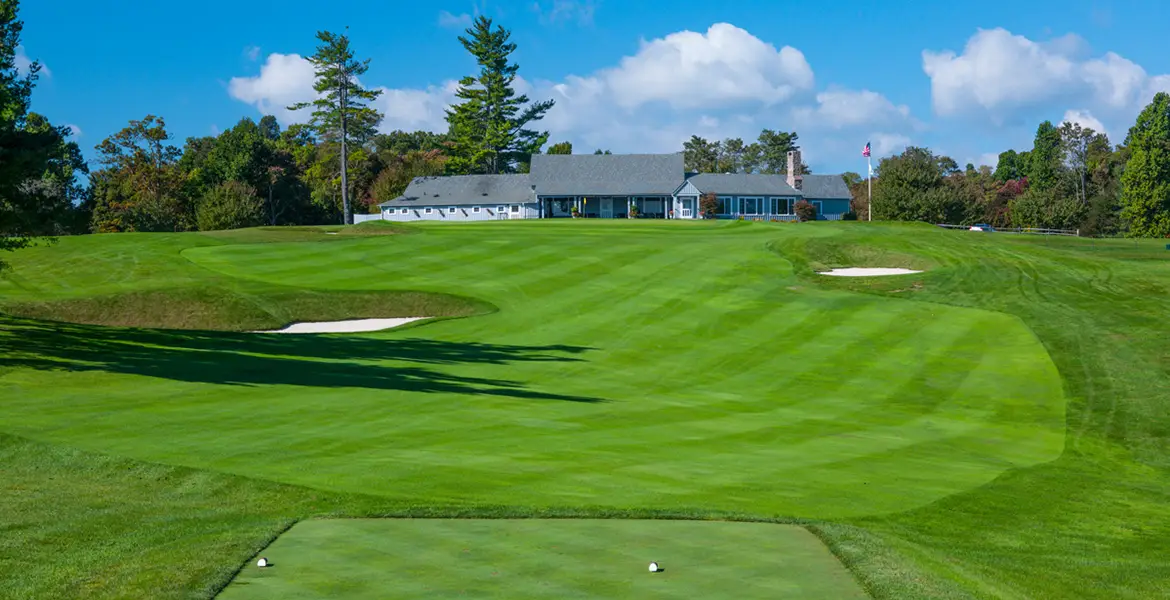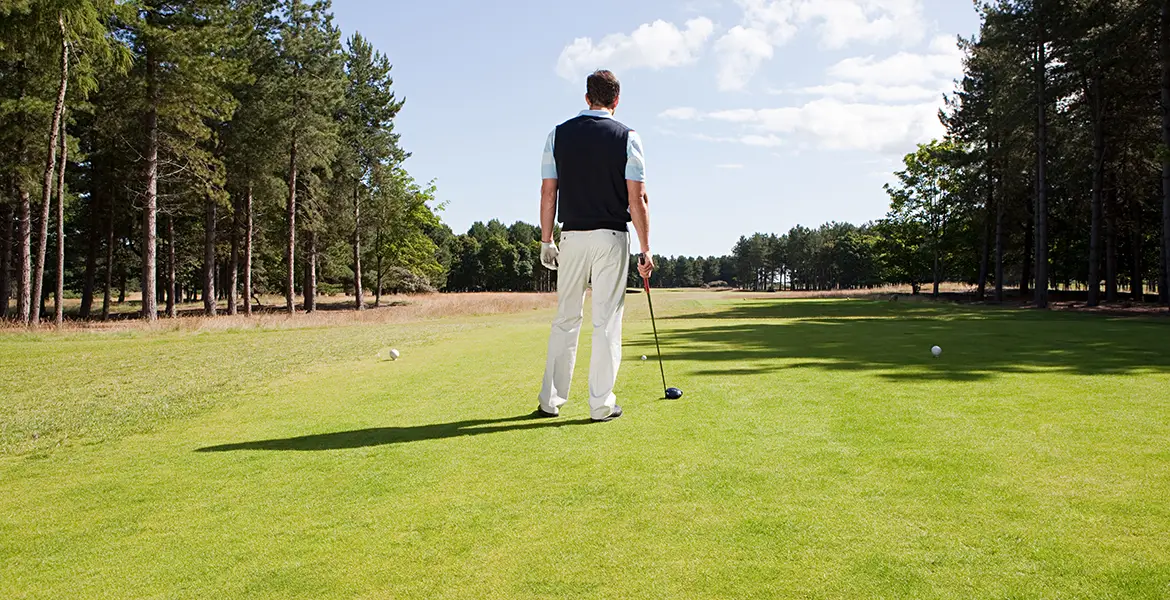In the future, it may be a game of greenies and screenies
Every once in a while, my good wife, a generally level-headed (if golf-averse) person, comes up with a delightfully insane idea. Her all-time beauty came a few decades ago when one evening, out of nowhere, she said, “Why don’t we go live in St. Andrews for a couple of years.”
My initial stupefaction morphed within minutes (okay, seconds) to excited contemplation and then loving gratitude. If she’d decided to be that sweet and generous, who was I to refuse? Sure enough, a few months later, off we went for what turned about to be eight of the best years of our lives.
Well, not long ago, she did it again. We were standing in a large, unused room in our empty-nest of a home when, suddenly, Libby said, “I just figured out what we need in here. A golf simulator.”
Where in the world had that one come from? I had no idea she even knew what a golf simulator was. Turns out she’d just read an article about them and shortly after that had seen a news clip of Tiger and Rory yucking it up in the TGL golf dome.
Once again, my astonishment gave way quickly to fantasizing. The idea had merit, and I’d come to trust Libby’s instincts with nutty notions. But then I did some pricing and determined that a proper home simulator with the bells and whistles I’d want would cost more than a mid-size car. So our large, unused room remains largely unused.
Besides, I am after all a traditional golfer—the kind that prefers to walk on real grass and smack his Titleist at something other than a screen. Chances are, you’re the same. But know this: We are now in the minority.
According to golf’s official scorekeeper, the National Golf Foundation, in each of the last three years, the number of green-grass golfers in America has been dwarfed by the number of off-coursers, folks who get in their swings at entertainment venues like Topgolf, at driving ranges, or on simulators. Last year, there were 36.2 million off-course golfers versus 28.1 green-grass players.
Mind you, the game as a whole has grown nicely, with the total number of folks engaged in some type of club-and-ball experience having increased 38 percent over five years ago. Granted, much of that growth has come as the residue of the COVID years when golf was the only safe game in town, but the pandemic bump has subsided in the last year or so while at the same time screen golf has gone viral. Golf participation among traditional “greenies” has grown by 16 percent since 2019 while the “screenies” have increased by 55 percent, and that trend shows no sign of stopping any time soon.
It’s all good news for the game, I guess, but it also prompts a question: Where exactly are we headed? To date, there is no compelling evidence that this new legion of off-course golfers will wander onto the fairway. Surely a certain number will make the leap, but just as certainly a larger number—probably the majority—will happily keep playing the only golf they’ve ever known.
And for good reasons. Indoor golf addresses all the negatives of outdoor golf.
Cost: Even the highest bay-rental rates on simulators are lower than most green fees (or club memberships). And there are no cart or caddie fees.
Time Spent: Four players can complete 18 holes of screen golf comfortably in three hours or less, as opposed to four or five (or six!) hours on a course.
Convenience: Indoor tee times don’t get canceled or delayed because of weather.
Pace of Play: You’re never held up by the group in front of you (or in the next bay).
Physical Strain: Walking a simulator course is, shall we say, untaxing. Your feet never get wet, sand never blows back in your face, and you never lose a ball. When it’s not your turn to play, you can sit on a couch with a beer.
Welcome: Indoor golf may involve a screen, but there is no iron gate, no discriminatory admission process, no dress code, no “oldest member” staring down at you imperiously from the clubhouse veranda.
Sociability: It’s a party. Bring your buds. Crank up the music. Eat, drink, swing, chip, putt, and be merry. Then post your scores on Instagram.
Fairness: Everyone competes on the same level playing field and under the same perfect playing conditions, with no preferential tee times.

It’s no surprise that the demographic makeup of the indoor set is younger, more female, and more diverse than green-golf. The average age of indoor-only players is estimated to be 15 years younger than outdoor players. Women make up 42 percent of the indoor-only group as opposed to 28 percent outdoors, and people of color represent 42 percent of the screenies versus 25 percent of traditional players.
So a message seems to be emerging: Our game is not so much growing as bifurcating. Hey, it happens. What was once skiing is now skiing-and-snowboarding. What was once tennis is now tennis-and-pickleball. Change is inexorable. Besides, whether we like to admit or not, golf has always been a divisive game. For decades, women were roundly excluded, as were African Americans, and although things have improved, more than a few shameful bastions remain. And even if 21st-century golf no longer excludes overtly according to gender or skin color, it surely continues to discriminate on another basis—wealth. The more money you have, the more doors you can open and the more exalted golf experiences you can have.
The difference now is that the disenfranchised and disaffected have a good alternative. Our once-cozy enclave of a game has become an instrument of the digital divide. Ultimately, a generation or two down the road we could have two golfs—one played on posh green playgrounds by the fortunate few (think polo) and the other played by everyone else in a more relaxed and egalitarian atmosphere (think bowling).
Everyone will be making a choice, and some of us may go both ways, at least for a while, before making a slow transition. This has all made me think—actually rethink—something. I’m not getting any more agile, so walking a golf course doesn’t hold the delight it once did. Also, I rather like the notion of falling out of bed and playing a quick nine in my pajamas. Or tinkering with my swing and producing bizarrely awful shots that no one can see. Or playing a wide-open, zero-green-fee version of Pebble Beach. Or giving my grandkids an introduction to the Old Course in perfect weather.
Yeah, I think I may need to get back to Libby about that crazy idea of hers.







Great article George though I hate seeing this trend
“…and people of color represent 42 percent of the screenies…For decades, women were roundly excluded, as were African Americans”
Well, which euphemism is it?? POCs or AAs? Choose one, and stick with it.
Or better yet, be more precise, since you are a journalist. How about “nonwhites” instead of the ridiculous “people of color”, and “blacks” instead of the lame (and often inaccurate – not all American blacks trace their lineage to Africa) “African American”?
Lastly, I’m fine with more golfers being screenies and freeing up the space and the tee times for us greenies.
Build your simulator space George. We are moving so my garage simulator setup will be accommodated in a nicer space. I have been enjoying getting together with friends in person or online to play and to escape into the garage to listen to music while chipping a few wedges. Play outside all summer in Canada, but the winters are interminably long.
What an informative piece. The numbers show the size of this yet to crest wave. The parallels to tennis/pickleball and skiing/snowboarding are spot on. This gives owners, operators, sales reps and developers a lot to think about. Well done George!